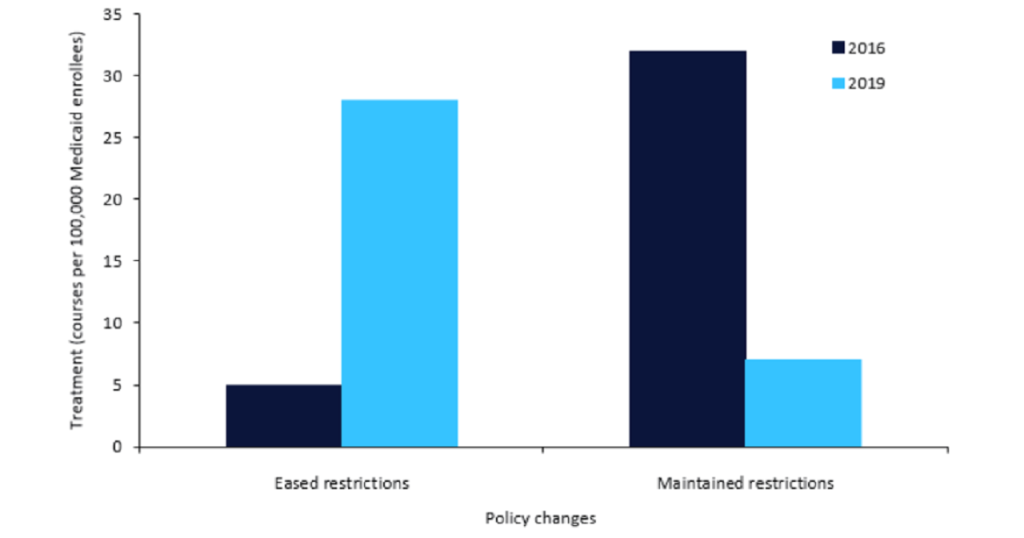The Question
Which study design is best for a Post-Market Device Efficacy Study – a prospective randomized clinical trial, a prospective cohort observational study, or a retrospective cohort observational study?
The Problem
510K approval and initial acceptance by a small group of interested physicians may only be the first step toward widespread use and for wider market acceptance. Oftentimes, device marketers hear physicians say, “I will only accept data from this device through a randomized clinical trial (RCT).” This sentiment is largely based on the belief that an RCT is the gold standard and other study designs are inferior. An RCT can generate reliable, high quality data, but how much better are they compared to prospective or retrospective observational studies?
Benson and Hartz (NEJM June 22, 2000) carefully reviewed this topic and concluded that there were few differences in treatment effects between the two types of studies. However, the problem with 510K cleared medical devices is that they can be cleared by the FDA with the minimum of safety and efficacy data. This can put the device manufacturer in the circumstance of trying to market a device with sparse data on its clinical utility, cost-effectiveness, or even safety data. It also gives rise to the situation where a newly cleared device is not unacceptable for reimbursement and cannot readily be used by the prescribing physician, even when it is very likely the best modality available due to hospital purchasing requirements.
To justify safety and efficacy on the cleared device, clinical studies are the chief means to generate the needed data. But clinical studies can be long, expensive, and may not always yield convincing data. Moreover, by the time a suitably powered, randomized clinical trial is completed, the device may no longer have the relevancy that it had two or three years earlier because medical devices have a much shorter life cycle than pharmaceuticals. Timely data is often the critical factor to bringing medical devices to market while they’re still relevant.
Generating the Clinical Signal
There are three general study designs that can be used and each has their pros and cons – an RCT, a prospective cohort observational study, and a retrospective cohort observational study.
See Also:
An RCT, as previously mentioned, is considered the gold standard of clinical trials. A clean design, clear endpoints, and well-defined comparators lead to highly accepted data. On the downside, they are very expensive, they’re slow to generate data, enrolling patients can prove troublesome, there are higher regulatory hurdles, and they may not be ethical. For example, if the cleared device has been shown to be much better by observational studies, the quality of life may be lost within a controlled population.
How well do you really know your competitors?
Access the most comprehensive Company Profiles on the market, powered by GlobalData. Save hours of research. Gain competitive edge.

Thank you!
Your download email will arrive shortly
Not ready to buy yet? Download a free sample
We are confident about the unique quality of our Company Profiles. However, we want you to make the most beneficial decision for your business, so we offer a free sample that you can download by submitting the below form
By GlobalDataA common model for a prospective observational cohort study is one that employs case controls or historical controls. These studies have lower regulatory hurdles, are less expensive (can be much less) than RCTs, offer the most ethical modality, and can use larger populations/more sites. Please note documentation can and should be as carefully controlled as an RCT.
Where a site uses historic case controls or a literature study is used as the “control,” finances that would be used to pay for the control group in an RCT can make a larger “treatment” group more affordable. The result being a larger population for the study. To reduce site bias, the site should use the device exclusively within the target population, the exception being where the physician feels an individual patient would not benefit. In this instance, huge comparator databases can be used. For this study design to be meaningful, it’s essential a clean, recent, pertinent literature comparator exist. It may be useful to build into the protocol the ability to use future studies that may provide better benchmarks than the one(s) chosen at the outset of the trial. A potential downside is that these studies can also be lengthy because they still require the site use the device (prospective) so data can be collected.
These studies will also require monitoring, EDC systems, clinical files, site selection/training, and can be nearly as complex as an RCT in terms of data handling. It should be noted that it can take some effort to find comparator data that has the variables needed to make the case for efficacy or safety for your device.
With retrospective cohort observational studies, these studies utilize medical data when a device has previously been used (early adapting physicians). They will utilize a historical (non-treatment) comparator (case control or literature) and look at treatment differences between use and non-use at similar or the same institutions. Huge comparator databases may be possible. The study can be controlled only to the extent of ensuring existence and accuracy of the entered data versus hospital records. These studies are rapid (patients have already been treated/exposed to device), require only minimal regulatory approvals, do not require patient informed consents, and can be operated for a fraction of the cost of an RCT or a prospective observational study. In my work on cardiac infections, the difference in per patient costs was about 100 fold, not including study operational costs.
Conclusion
While an RCT is considered to offer the highest level of data quality, it is much slower, very expensive, may have only minimal populations, and faces regulatory challenges compared with observational studies. A number of publications have made strong cases that a well planned prospective cohort observational study can generate data that is just as accurate. In a situation where an approved product will require safety and efficacy testing, it would make sense to consider the available trial modalities in terms of cost, data quality, and time to generate pertinent data. With adequate planning, you can save time, money, and generate as good or better data using an observational approach.
Steve Sisk, MSc Pharmacy
Director Clinical Operations,
CytoSorbents Corporation
Monmouth Junction, NJ 09952







